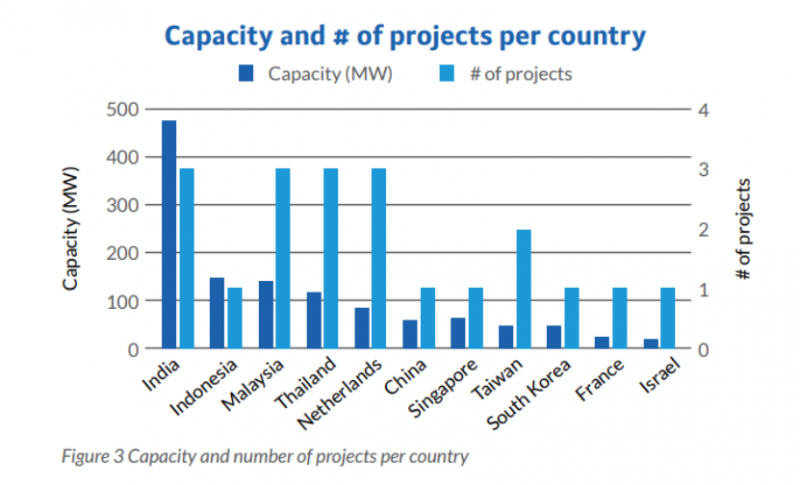It's expected that the floating solar installed capacity can be expected to add 1.5GW in 2021.
According to the Solar Energy Research Institute of Singapore's 2020 Market Report, as of September 2020, the total number of floating solar projects worldwide has reached 2.087GW(DC). For many countries with limited land but plenty of water, floating solar energy (FPV) offers a huge opportunity. Countries like Singapore, South Korea, India, Japan, the Netherlands and Greece have been very active in FPV markets in recent years. There are also projects in the Middle East using floating solar energy for desalination and hydrogen production. IHS Markit forecasted that Asia will account for 59% of the nearly 1.5GW of new floating power installations in 2021.
According to statistics from Solarplaza in 2021, the top 20 floating power stations under construction in the world will have a total capacity of 1.2GW. There are 16 of them, which are in Asia with a total capacity of 1.1GW. The other four stations are all in Europe with a total capacity of 0.106GW. The largest floating plant under construction is in India, with a unit capacity of up to 300MW. In Europe, the Netherlands was the best performer, with France and Greece catching up.
When it comes to the providers of floating PV system, Sungrow Floating and Ciel & Terre are the two dominant players in the TOP20. The combined share of the two accounts for 42%. Of course, as the professional manufacturer of floating solar PV mounting systems, we, Topper Floating Solar PV Mounting Manufacturer Co., Ltd have been concentrating on it since 2003. And we were certified by ISO 9001:2015.


Data source: Solarplaza
In addition to desalination and photovoltaic hydrogen production, a very promising emerging market segment is the combination of FPV with existing hydropower stations. It uses the hydropower station as the energy storage system so as to optimize the energy output of the whole portfolio. This is not only applicable to the daytime cycle (solar energy is mainly used during the day and water power is used at night), but also may be used to buffer the fluctuations caused by photovoltaic power generation and seasonal compensation for drought in hydropower stations and rainy seasons. Such hybrid power plant systems have huge potential in the ASEAN region. Now, many countries like Indonesia, Thailand, Vietnam, Laos and Myanmar are already studying such projects.
